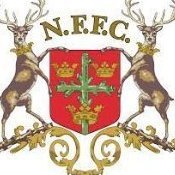What's a stolen neutral and how to fix it.
-
Recently Browsing 0 members
- No registered users viewing this page.
-
Topics
-
-
Popular Contributors
-
-
Latest posts...
-
74
-
7,349
-
7
-
58
Ukraine Putin Shrugs Off Trump’s Ukraine Ultimatum
So US & UK sources say that Russia has lost 600k and Ukraine only 31k ?? C'mon, Are you seriously believing that -
47
Treatment of benign prostatic hyperplasia (BPH)
Simon43, the best I can answer you to clarify any confusion is as follows: With an enlarged prostate plus a very high PSA, the medical recommendation is usually a prostate biopsy. But this is an invasive procedure and uncomfortable. Also is is not always 100% accurate. Although they take several tissues samples during the procedure, they can miss tissues that are carcinogenic ( have cancer). From my experience and further research and second/ third opinion I chose a non-invasive procedure, MRI. Some hospitals have an MRI machine that can detect cancer. It is very sophisticated and updated. My report listed findings on all parts of the bladder, prostate and they gave a rating to indicate the possibility of cancer. PI-RADS ( prostate Imaging Reporting and Data System). My score was 2. A score of 2 indicates a low risk of clinically significant prostate cancer. This means based on the MRI findings, it is unlikely that a Clinically significant tumour is present. Of course a biopsy is much cheaper but you have to consent that there could be complications, though rare. Also the results can be inconclusive. It’s entirely up to the Individual, but it would depend on several factors, price, affordability, informed choice, family history and of course the ‘do nothing option’, ‘ wait and see’. Hope this helps somewhat. -
29
Tommy Robinson.
....and the current situation re: Manchester is....???? And that is ignoring...... The Crown Prosecution Service (CPS) in England is facing unprecedented strain, with some prosecutors handling over 100 to 200 cases at a time—levels described as “never before seen” . The backlog in crown courts has surged to around 71,000 cases, and could hit 100,000 without radical intervention . This overload is compounded by a shortage of barristers, forcing officials to “ring around” for legal representation. Victims are increasingly dropping out of cases due to delays, with rape trials now taking an average of 2.5 years to conclude . The system is overwhelmed, and experts warn that without structural reform, justice will continue to be delayed—and denied—for many.
-
-
Popular in The Pub









Recommended Posts
Create an account or sign in to comment
You need to be a member in order to leave a comment
Create an account
Sign up for a new account in our community. It's easy!
Register a new accountSign in
Already have an account? Sign in here.
Sign In Now